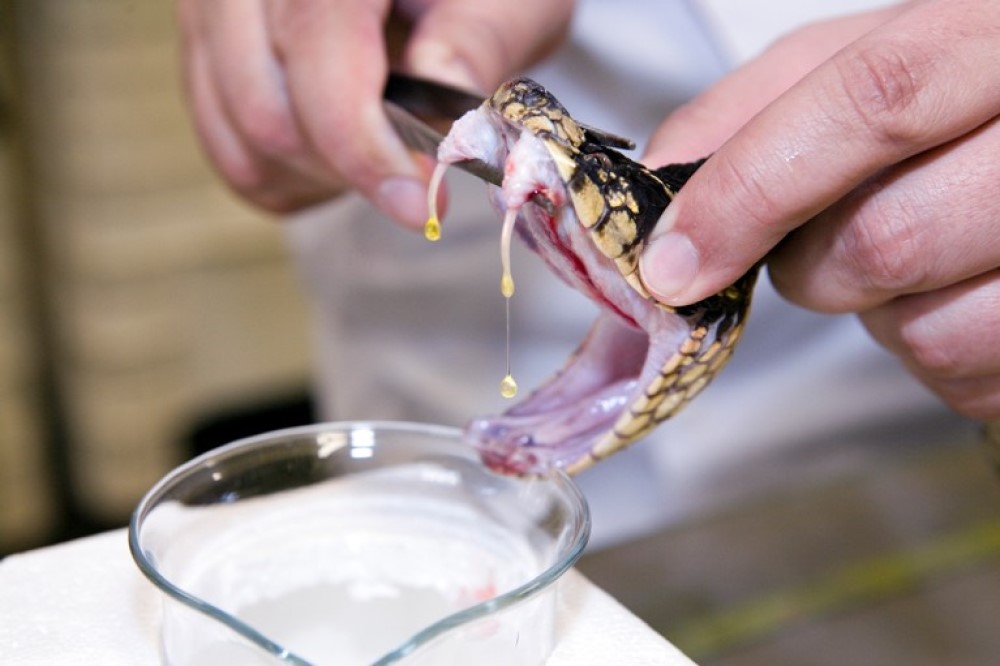Types of snakes with venom are dangerous snakes and usually cause immediate reactions. The patient has symptoms such as a stiff mouth, impaired vision, stagnation of sticky sputum, and blood vomiting for a few hours if a venomous snake is bitten. A modest number of teeth marks as well as two canine marks spaced approximately 5mm apart may be visible on the wound.
Whether from venomous or non-venomous snakes, a snakebite is typically painful and frequently accompanied by autonomic symptoms (eg, nausea, vomiting, tachycardia, diarrhea, sweating). It can be challenging to tell this apart from systemic signs. Non-venomous snake bites only result in localized damage, generally pain, and two to four rows of scratches from the snake’s top jaw.
Here, this blog will cover more specifically about types of snakes with venom! We guarantee that you will need more information about Snake Venom before you start digging deeper into their types. Let’s start with the most basic things to make it easier for you to understand. Scroll down below and keep exploring!
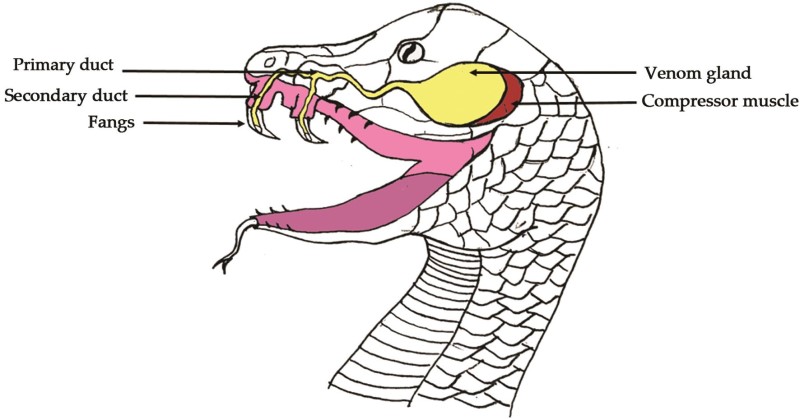
About Snake Venom
Venomous snakes employ the poison in their saliva, which is released by their mouth’s fangs, to immobilize or kill their prey. Some snakes have distinctive venom from other snakes.
Snake venom is a complex mixture of anticoagulants, proteins with enzymatic activity, and other chemicals. Venoms can contain up to 25 distinct enzymes, with 10 of them being identified in the majority of them. Despite the fact that enzymes play a significant role, a number of smaller polypeptides are responsible for the venom’s deadly effects.
Many different physiological receptors appear to bind to the majority of venom components, and efforts have been made to categorize venoms according to certain systems. For instance, myotoxins, cardiotoxins, hemotoxins, and neurotoxins can be deceptive and cause clinical judgment errors.
Because solid protein differs from the proteins found in humans and other animals, when it enters the body, it will trigger severe allergies. Each of the thousands of distinct proteins in the venom causes a unique sort of allergy. Only the proteins that go to the glands beneath a snake’s jaws are tailored to make toxins; all other proteins produced by the liver of a snake are normal proteins. And those harmful proteins’ biosynthesis processes are accelerated by enzymes.
Types of Snakes with Venom
The three main categories of snake venom are Cytotoxic, Neurotoxic, and Hemotoxic. Hemotoxin kills red blood cells, neurotoxin paralyzes nerves, and cytotoxin inhibits cellular respiration enzymes.
In addition to these 3 main venoms there is also a proteolytic venom but it is not usually listed in the Types of Snakes with Venom list because it is present in all snake bites. However, we will introduce you to Proteolytic Venom before coming to the remaining 3 types.
Proteolytic Venom
All poisonous snakes produce proteolytic venom, which degenerates tissue structurally by containing proteolytic enzymes. Particularly, the venom works at the poisoning site, which is one of the reasons humans notice such dramatic changes at the place of the bite.
The venom causes blood vessel walls and muscle tissue to dissolve, hastening the death of the prey and maybe facilitating digestion. Rattlesnakes and other Vipers have a lot of proteolytic venom, which works with their blood-poisoning venom to cause terrible wounds.
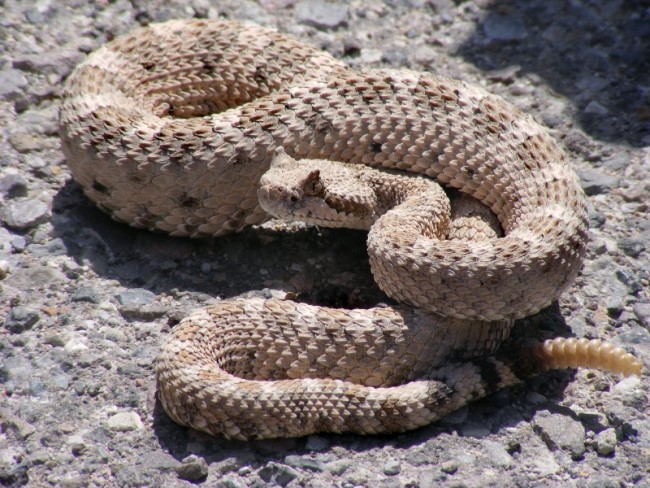
1. Hemotoxic Venom
The hemotoxic venom damages tissues and organs as well as the patient’s body’s red blood cells. Most of the time, those who have been injected with hemotoxic venom will know immediately away. It also results in organ aging, body-wide tissue damage, and significant internal hemorrhage.
Additionally, the venom can either stop blood from clotting or force it to do so; both outcomes are potentially lethal. Heart failure, amputation of the injured leg, and severe internal bleeding are all effects of its venom in people.
In contrast to other snake venoms, hemotoxic venom acts more gradually. With the right medical attention, a person can typically survive. Snakes with hemotoxic venom include Rattlesnakes and Russell vipers.
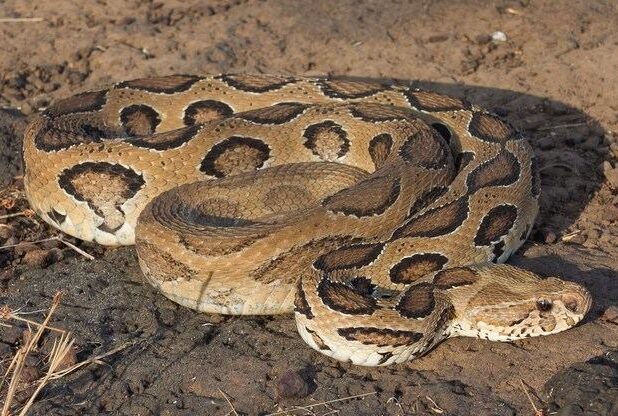
2. Neurotoxic Venom
According to how much is injected into the sufferer, Neurotoxic venom is thought to be the deadliest and can cause death in as little as 30 minutes. Snakes administer neurotoxins through their bites, which impair the neurological system of the prey, resulting in muscle paralysis, brain damage, and coma. This kind of venom disrupts nerve signals in various sections of the body, sometimes acting very quickly.
Neurotoxins, in contrast to hemotoxic venoms, can be administered painlessly. In fact, before experiencing symptoms, some people are unaware they have been bitten.
This particular variation is produced by the Black Mamba, which is the world’s deadliest snake with a death rate of 100%. Black mamba venom can make symptoms apparent in as little as 15 minutes and can make a person drop unconscious in less than an hour. Leaving neurotoxic venom untreated can often result in death.
The majority of the venom from Coral snakes is neurotoxic, resulting in synaptic inhibition, which can result in respiratory paralysis. The absence of symptoms and warning signs at the bite site is the main cause of the proteolytic enzymes’ lack of activity.

3. Cytotoxic Venom
Cytotoxic Venom is a cytotoxic venom that weakens tissues at the molecular level, causing cell death and producing excruciating agony. This venom is not as lethal as hemotoxic or neurogenic venom. However, cytotoxicity frequently leads to secondary injuries such the loss of limb function and other abnormalities.
This venom is known to severely harm the skin and underlying tissues, frequently leaving the victim disabled. Even if the person survives the initial bite, these consequences may cause them to have ongoing difficulties. Cobras and other antelope species frequently possess this type of venom. It is well known that the Indian Cobra’s venom has a cytotoxic tendency.
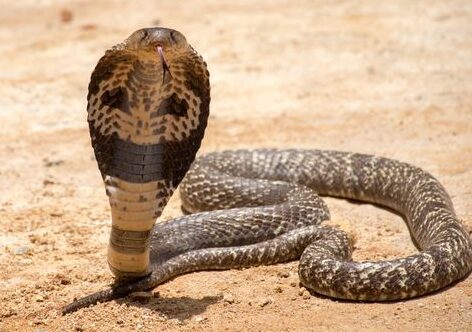
Final Words
Above are 3 main types of snakes with venom including Hemotoxic, Neurotoxic, and Cytotoxic. Along with them, we also point out a few related venomous snakes. But not only that, there are many snake species in the world that also contain these venoms and as you know, we can’t tell them all.
Either way, snake venom is extremely dangerous, you need to take precautions and it is best to stay away from snakes. Snakes never purposefully sting humans, unless they are provoked or need to protect themselves. This is a scientific truth. They utilize it as a hunting tool, and injecting it will drain the animal’s energy significantly. In order to avoid wasting their venom, snakes are cautious when using it and only do so when they perceive a threat from people.
Learn more: How to Cure Venomous Snake Bites and Essential Notes You Need to Know

